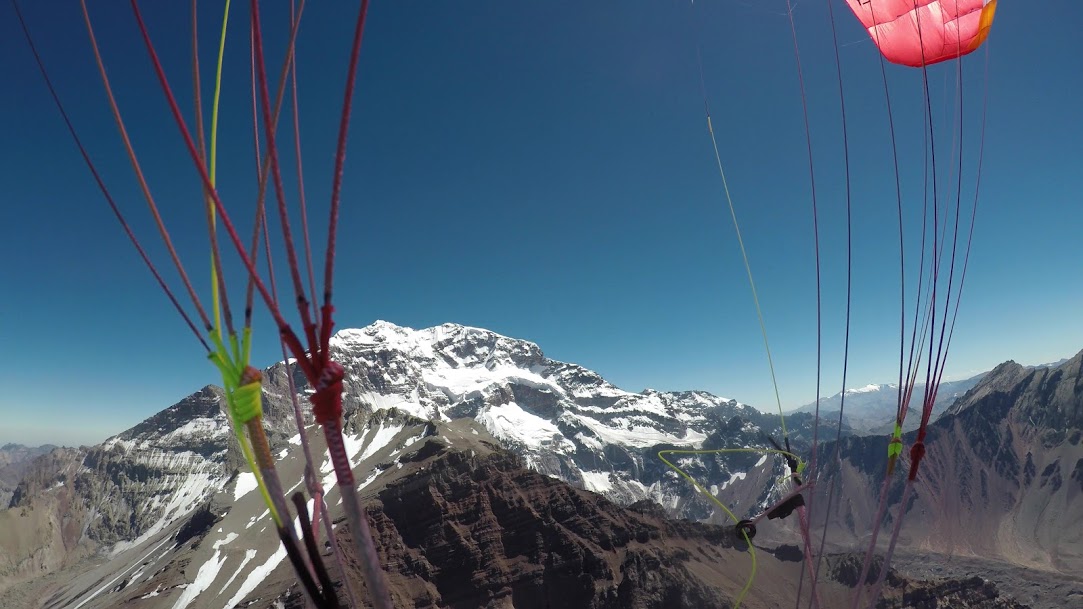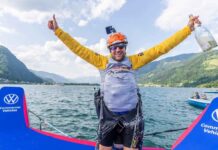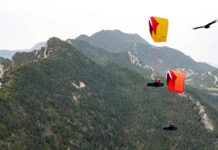On the 15th of February 2019, two paragliders were soaring above the Horcones Valley that leads to the Aconcagua peak. The Czech Gabriel Mazur and his French buddy Jean-Baptiste Chandesris completed the ascent of the highest summit of the Americas and paraglided down from it. This expedition was preparation for higher objectives in the Himalayas for them.
I was lucky to meet with Gabriel in Mendoza, Argentina, where he told me about his flight from one of the seven summits.
Gabriel, please, tell us a couple of words about your previous experience in paragliding and mountaineering?
I started paragliding two years ago doing a course in Aspen, Colorado. My instructor, Paul Gurrieri knew from the beginning that I was interested in paragliding for Climb&Fly or Hike&Fly objectives. So my training from the very beginning was at high altitude, with winds, cliff launches, and landings that are not visible from the take-off. Since my initial training, I flew in the USA, France, Italy, Switzerland, Nepal, Australia, New Zealand and now Argentina. So far my flying is limited to small, stable mountain wings – my first one was an Advance Pi2, now Dudek Run&Fly, and speed flying. I am just starting to learn about cross country…
I would say significant flights before Aconcagua were all the flights done in the European Alps or in Southern Alps of New Zealand, where I had to make my own decisions about takeoffs, landings, winds in the valleys, and dealing with the alpine environment.
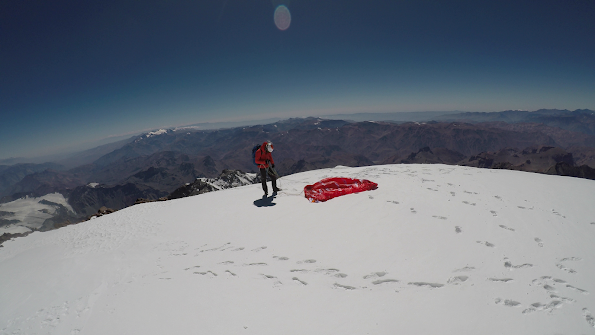
As for mountaineering, I work as IFMGA/UIAGM guide. This is an international qualification that covers everything from rock, ice, alpine, high altitude climbing, mountaineering, backcountry skiing, and ski mountaineering. To become IFMGA qualified requires at least 3 to 5 years of training and practice. I guide mainly in the Alps, Nepal, India, New Zealand and South America.
What was your highest take-off?
So far only 4000m, in the Alps as I live in Chamonix, and Nepal.
When was the idea of this flight born and what inspired it?
The idea came as me and Jean-Baptiste (JB) we like to climb and fly together in New Zealand. JB had finished guiding in Antarctica, me in New Zealand and we wanted to do something together in South America. Aconcagua came just as a thought, as we are both a bit cocky (laughing). Then we abandoned the idea due to cost, then friends chipped in and all of a sudden we were able to try.
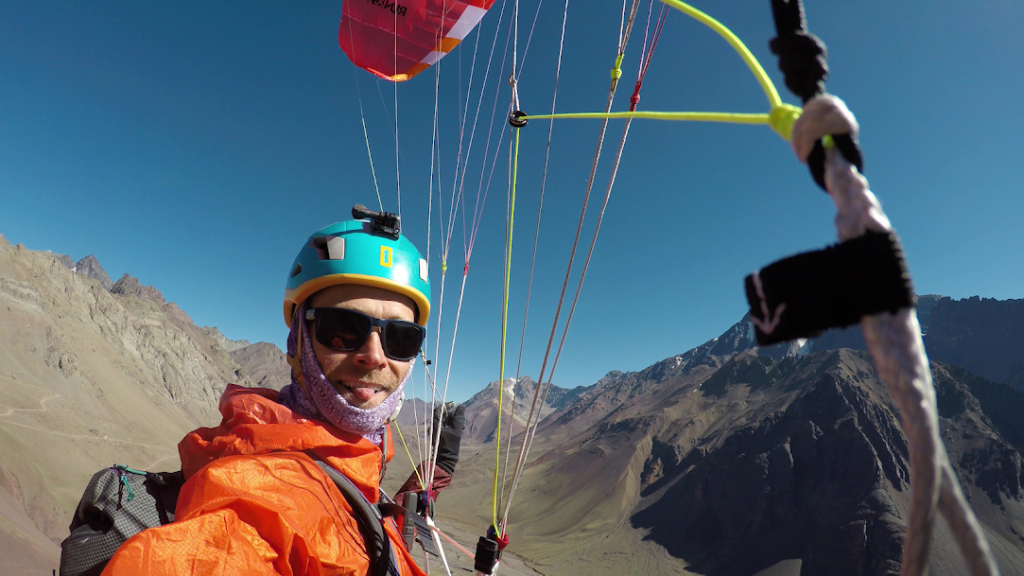
Why did you chose Aconcagua for your first high altitude flight?
We choose Aconcagua because it is big, and there is so much unpredictable. We loved that. It is complex, yet super simple. You only go if all falls in place. Otherwise, there really is no option. It makes the decision making easy.
It was the first time on Aconcagua for both of us. We studied the layout and options on FatMap App and fatmap.com, then Windy App, and that was pretty much our preparation for the ascent and flight.
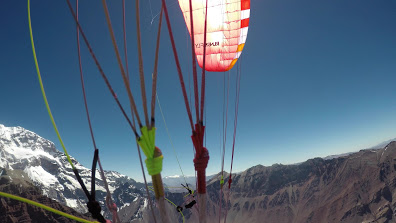
What was the main point at the time of choosing the moment to do it?
The main point was our common free time. So we could both get to South America. Once we decided we wanted to do something together and the place was SA, we saw that it was pretty much the season for Aconcagua so we jumped on it. Quite opportunistic.
Did you train before coming to Argentina? In general, physically, mountain/glacier flights? Did you acclimatize before going up?
We both have very body demanding jobs, so our work is our training. We were fit. That is why we could go up to the summit in two days without worry once we knew there was a possible weather window. We did not have time to acclimatize, as the weather just before the good spell was very bad. And acclimatization only lasts for something like a week, so we could not acclimatize a long time in advance.
Flying-wise, as we are both mainly Climb&Fly, all our flights usually start in an alpine environment. Snow, glaciers are known to us.
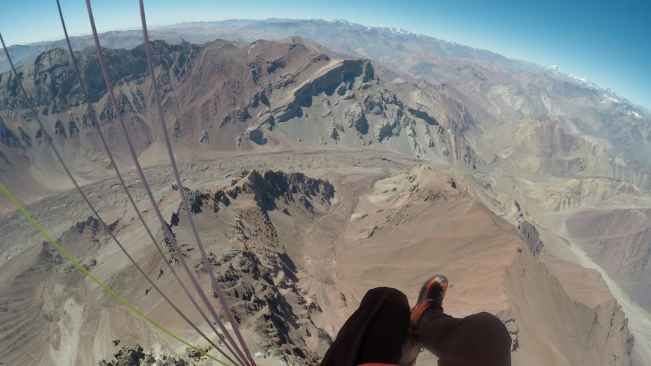
What kind of mountaineering/camping gear did you bring with you to the expedition?
We hired mules from Horcones to Plaza de Mulas. From BC to Berlin, we had an MSR Reactor for hot water; nuts, tuna, and polenta for food, -30º sleeping bags and sleeping mats. No tent. We never weighed our bags, but they were around 10-12kg each.
A couple of words about the flight?
We planned the take-off direction depending on the wind. Once airborne, we would always try to fly towards Confluencia. We flew Dudek Run&Fly wings, size 16 – some geniuses can thermal those; us, with the high altitude and the heavy packs, we only go down. Our objective was not to fly. Our objective was to have fun in the descent.
Our max altitude was the take-off altitude, 6970m and my max speed was 66,8km/h. The flight lasted 29min, with take-off and landing being the most technical moments. I landed in Horcones, JB in Confluencia.
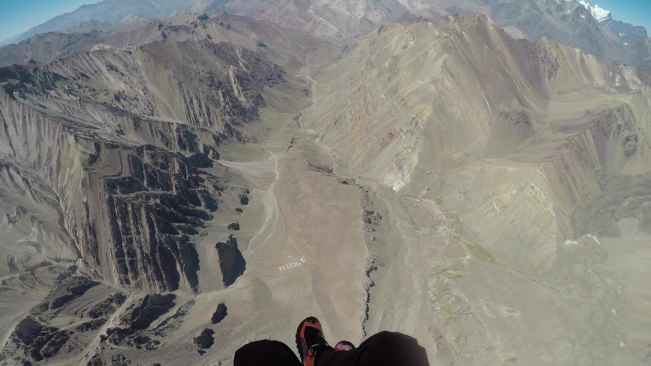
What wing do you normally fly?
I usually fly mountain wings, now Dudek Run&Fly, previously Advance Pi2.
Tell us please about your new wing.
Dudek Run&Fly 16, 980 grams. It was designed by Jean-Baptiste Chandelier and some other folks. It is a single skin wing made from Porcher Fabric. We saw their release video, wrote to them and ordered them. They are epic!
What was your feeling about it?
Super easy handling on takeoff, awesome flair for a single skin on landing, and fast as well. The best thing for me is the packing size and the weight. And the speed.
Is it available on the market? Are you going to participate in the promotion?
It´s available and it costs around 2000€. We are not sponsored by them so we will not participate in the promotion.
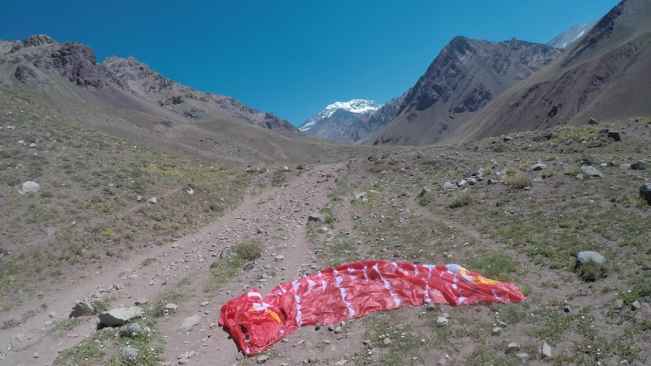
Are you going to fly this wing in your next projects?
That is the plan.
What are you next projects?
Have fun, climb mountains, descent paragliding. We applied for a Broad Peak [Pakistan, 8051m] paragliding permit.
How do you finance your expeditions?
Myself and friends. I get some climbing gear from some brands, but no money for now.
What’s the difficulty when you take off in an altitude close to 7000m?
Lack of oxygen can make you take wrong decisions. So the plan of decision making should be clear beforehand. Different winds at different altitudes, the difference in conditions between take-off and landing times. You should know how to descent super fast and even have some experience in crash landing before take off. Landing without reference points for wind direction. I’ve landed a few times on my Hike&Fly missions with back wind. It is good to practice that on nice grassy landings before you take it to rocky moraines or glaciers.
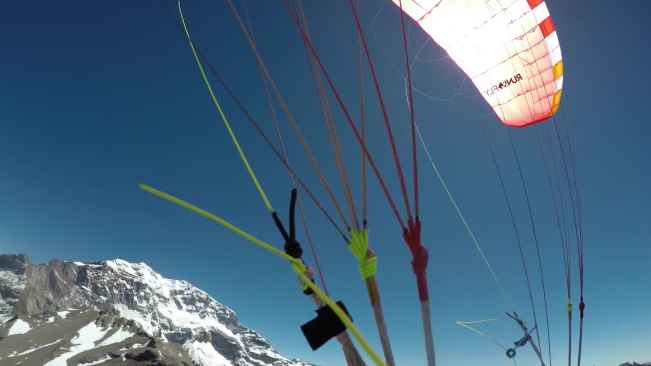
Another risk is cold. Again, the knowledge of fast descents is priceless.
Was the actual flight and conditions different from your expectations?
They were exactly as forecasted. Surprise!
The most difficult moment on the expedition? What was the highlight?
The most complicated was handling the permit application. The highlight was our hug with JB after landing.
Tell us a bit about your teammate Jean-Baptiste.
JB and I, we both work for Adventure Consultants in New Zealand. We climb together and paraglide in our days off. We are also interested in stretching the mind. May it be with mountain activities, or different diets, meditation, and so on. We are at the very beginning of more intensive activities together, and we are not super fixed on doing all together. But we challenge each other, respect each other’s space and like to push ourselves with the help of the other person.
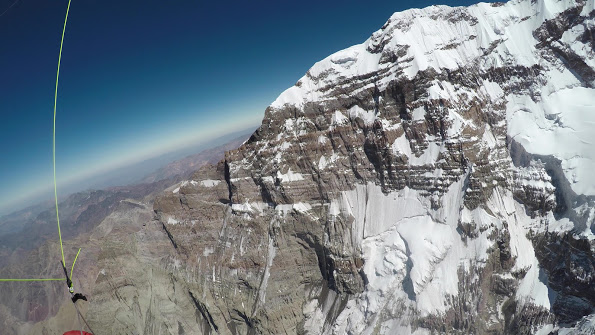
Something important you have discovered about each other’s personality?
We both like to have our own time and space, even when we are together over long periods of time. And we are both good at taking that time and space.
Could you give any advice to paragliding pilots who would like to try to fly in higher altitudes?
Paragliding is an extra. Become a competent mountaineer first! Fun is the main part. Only do what really makes you happy. Do not push for an objective if the fun part is gone. It leads to veiled decision making.
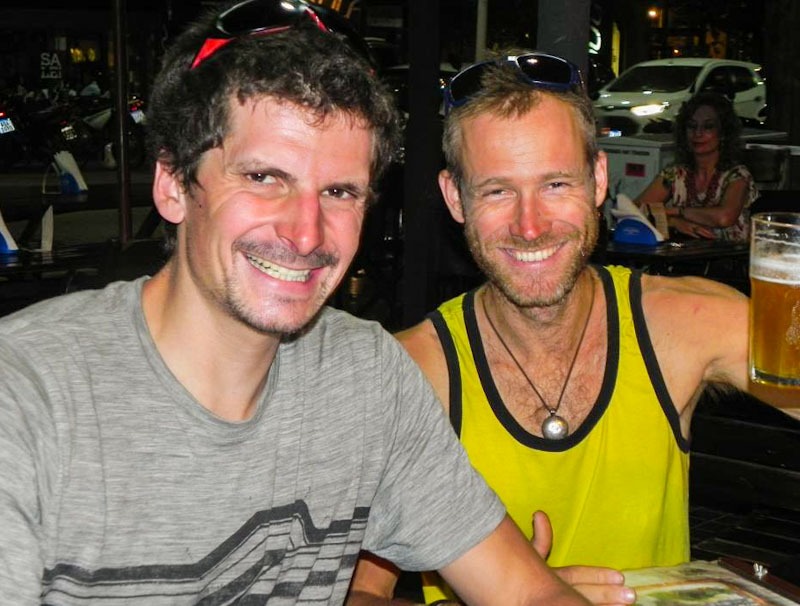
*Follow Gabriel Mazur on Facebook: https://www.facebook.com/gabrielmazurguiding/


